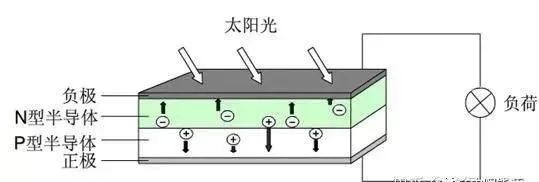| From light to electricity, what exactly happened? |
| Release time:2022-12-30 09:46:52| Viewed: |
From light to electricity, what exactly happened?
Photoelectricity originated in 1839
French scientists discover photovoltaic phenomenon
A battery consisting of two pieces of metal immersed in solution
Additional potential is generated when exposed to sunlight
Using this principle, people invented
Solar cell
Solar cell is a semiconductor element that generates electromotive force under the illumination of light. It is made of N type silicon plate and P type silicon plate.
Why is it a silicon plate?
First of all, the power on condition should meet two points
One is to have enough free electrons
Second, the directional movement of electrons
An atom is made up of nuclei and electrons
Usually, the outermost layer of an atom is stable with eight electrons
For example, there are four electrons in the outermost layer of silicon atom
More silicon atoms together will be stable
This is the structure of silicon plate
To move electrons in a directional direction
As shown in the figure below
When phosphorus is doped into silicon crystal
When boron is doped into silicon crystal
Clap the N-type plate and the P-type plate together
Diffusion of electrons from N region to P region
How to generate electricity?
When the sun shines on the silicon plate
After the solar cells are connected in series, they can be packaged and protected to form a large area of solar cell modules, which together with power controller and other components form a photovoltaic power generation device.
Common distributed photovoltaic equipment includes photovoltaic cell modules, photovoltaic array supports, DC combiner boxes, DC distribution cabinets, grid connected inverters, AC distribution cabinets and other equipment, as well as power supply system monitoring devices and environmental monitoring devices.
We can't live without electricity
Large scale ground independent photovoltaic power stations are generally built on wasteland and barren slopes, and photovoltaic systems are directly sold to power companies after power generation;
Industrial plants, commercial buildings, solar power plants on the roof of the family, for self use and surplus electricity on the Internet;
Solar daily electronic products, such as various solar chargers, solar street lamps and solar lawn lamps;
It provides mobile power supply and standby power supply for transportation, communication and marine fields.
PV will focus on the development of diversified application modes
Integration with traditional multiple business types While reducing the cost of electricity Effectively promote the realization of dual carbon goals
|

















